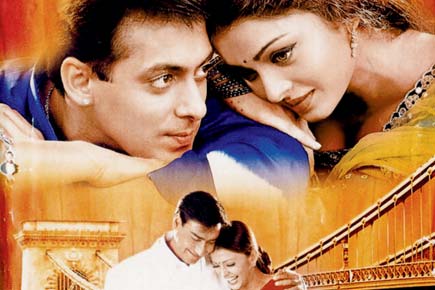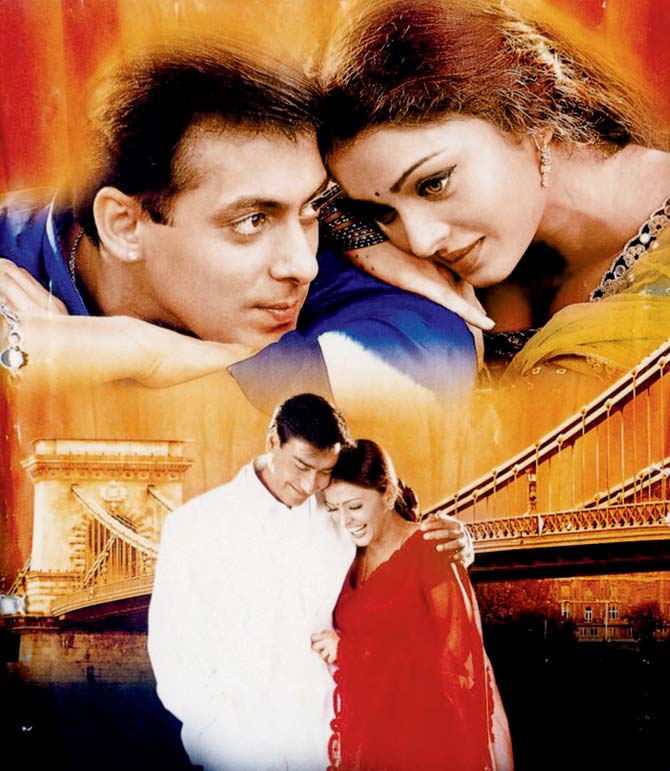It was day one of the National Film Development Corporation’s Film Bazaar in Goa last week, I was listening to the conversations around me

 It was day one of the National Film Development Corporation’s Film Bazaar in Goa last week, I was listening to the conversations around me. In the session just before mine, film critic Namrata Joshi was chatting with filmmakers Sudhir Mishra and Anurag Basu and producer Vani Tripathi Tikoo about female protagonists in Bollywood today. The question they were trying to answer was “how real is the discourse.” The discussion centered around familiar lines — how regressive the female stereotype in film and TV is, how some films and shows do try to change that and so on.
It was day one of the National Film Development Corporation’s Film Bazaar in Goa last week, I was listening to the conversations around me. In the session just before mine, film critic Namrata Joshi was chatting with filmmakers Sudhir Mishra and Anurag Basu and producer Vani Tripathi Tikoo about female protagonists in Bollywood today. The question they were trying to answer was “how real is the discourse.” The discussion centered around familiar lines — how regressive the female stereotype in film and TV is, how some films and shows do try to change that and so on.

In films or TV shows, it is rare to see men being truly liberal or able to cope with women who have a mind of their own. The one instance that I remember is when Ajay Devgn’s character in Hum Dil De Chuke Sanam (1999) realises that the woman he has just married is in love with someone else, and he decides to find her lover and unite them
ADVERTISEMENT
It was a well-intentioned but very ‘people like us’ discussion. The fact is, people in that room (including me) represent the top sliver of the Indian population — the ones who have got a decent education, come from families that did not repress the girl child and so on.
The fact is also that films, TV shows, advertising have done a huge amount to change the stereotypes around women. It was advertising that began showing the girl child instead of a boy child in the late eighties, early nineties. It is advertising which moved beyond the saree and kitchen before films followed with the imagery of a woman as a working entity too. It is now very normal for women, irrespective of class or town, to want to break through their little prisons and do more. That is how you hear of taxi drivers, golf players and pilots coming out of small-towns and poor homes in India.
The K-serials that everyone derided were not meant for people like you and me but for families where domestic strife is a reality. I remember arguing with editors that just because soap operas dramatised a reality we were not familiar with they weren’t regressive. Thankfully, a 2008 study by Robert Jensen of Brown University and Emily Oster of the University of Chicago proved my point. It showed, to quote from the abstract to the paper that, “The introduction of cable television (in rural India) is associated with significant decreases in the reported acceptability of domestic violence towards women and son preference, as well as increases in women’s autonomy and decreases in fertility. We also find suggestive evidence that exposure to cable increases school enrolment for younger children, perhaps through increased participation of women in household decision-making.”
Largely then, mainstream media has done a very good job of bringing women to the forefront of debates and empowering them.
What it has not done well enough is changing male stereotypes by giving them roles, images and contexts that are emancipated. What is the point of having independent women with a mind of their own when half the humanity around them is unable to cope with that? Advertising does a fair amount of envelope-pushing on male stereotypes through its tender, loving type of protagonist. But in films or TV shows, it is rare to see men being truly liberal or able to cope with women who have a mind of their own. The one instance that I remember is when Ajay Devgn’s character in Hum Dil De Chuke Sanam (1999) realises that the woman he has just married is in love with someone else, and he decides to find her lover and unite them. To his Dad’s incredulous questioning of this he says that, “Manhood (Mardangi) is not about forcing her to be my wife, it is about having the courage to let her go to whoever she wants to be with.” That to my mind was a really envelope-pushing statement, though the film’s ending was clichéd.
By showing men who cry, cook, or take on the housework at the end of an equally tiring day for both partners, we push the envelope. Sometimes, in real life it doesn’t work quite so simply. For instance, if a man takes his kids to school or takes time off from work to bring up a kid, there is a social awkwardness about it. Much of it also depends on the women — how they bring up their sons. If we treat them like little princelings at home, they will grow up thinking that they can put their feet up and relax. And if we bring them up in a home where both parents carry the load equally, there is respect for the other gender, they will grow up believing that women and men are equal human beings.
We need to change before the imagery changes. But we will change on a large scale only when the imagery does. Chicken and eggish, that.
The writer is a media specialist and author. Follow her on Twitter at https://twitter.com/vanitakohlik
 Subscribe today by clicking the link and stay updated with the latest news!" Click here!
Subscribe today by clicking the link and stay updated with the latest news!" Click here!







